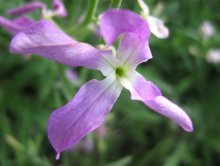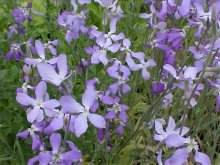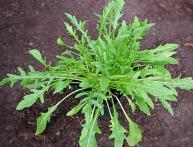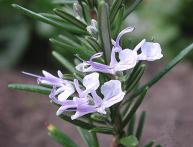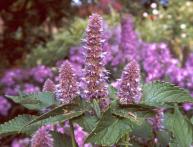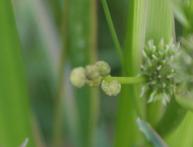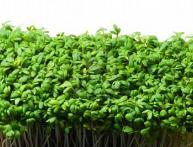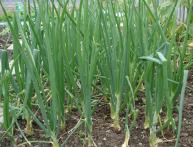Mattiola two-horned: features, planting and care
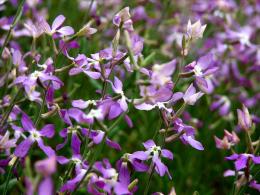
Matthiola bicorne is a plant that belongs to the cruciferous family. It does not require special skills regarding planting and care, but some rules are worth considering. By paying a little attention to the plant, it will delight you with its flowering and intoxicating aroma, which resembles the smell violets.
Content:
Features of the plant
Matthiola bicornuum is an annual plant that grows up to half a meter and grows with dense branches. Its foliage is linear and coarsely toothed. The flowers are small, purple in color. Despite their inconspicuousness, they emit an amazingly pleasant smell, which is especially intensified in the evening. During the day the flowers close.
Mattiola decorates the garden with its blooms all summer long. If you collect the seeds, they can be used for another 2-3 years for planting. They look small and grayish in color. The plant tolerates cold well and does not die even at -7 degrees. It loves places that are well lit by the sun, although it can also develop in partial shade. If it is too dark, then the matthiol will stretch out, and there will be fewer inflorescences, their aroma will decrease.
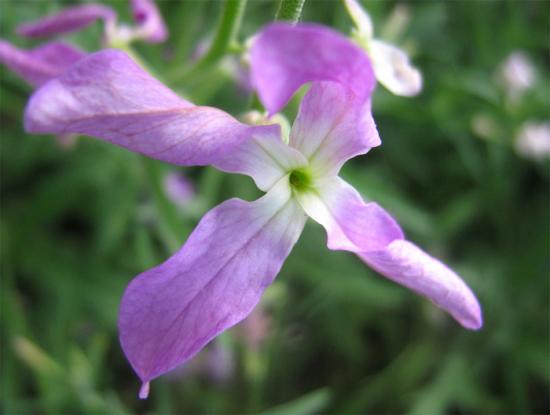
The plant prefers fertile soil, but can grow on other soils as well. soil. During drought, it is worth watering matthiola and fertilizing it. Seeds are often used for propagation, but some gardeners grow seedlings.But you should know that in this case there is a risk that the plant will die, since it is difficult to tolerate transplants.
Planting matthiola bicornuum
If the owners do not care when the plant blooms, then it is better to plant seeds. To do this, a place is selected and seed material is sown. This should be done at the end of April or beginning of May. It depends on weather conditions. After planting, 30-70 days will pass and the first flowers will appear. To sow seeds, you must adhere to the following rules:
- Initially, holes of shallow depth are made, and up to 5 seeds are placed in them.
- All this is covered with sand.
- Some gardeners use a different method.
- They combine sand with seed material and pour the mixture onto moist soil.
- After this, everything is covered with a small amount of soil.
- There should be about 20 cm between each hole.
If seedlings appear close to each other, thinning is necessary. A large number of gardeners do not recommend growing matthiola using seedlings. They explain this by saying that she doesn't like the transplant. But some people still decide to grow seedlings. After all, in this method, flowering will begin much earlier.
Initially, it is worth planting the seeds in boxes. This is done back in March. To begin with, turf soil, soil with rotten leaves and sand are mixed, then planting is carried out. Matthiola is considered an unpretentious plant, but when growing it is worth considering some rules. The main thing is that a certain temperature regime is observed. The plant tolerates cold well, so the temperature in the room where the seed is planted should not exceed 15 degrees.
When seedlings appear, the temperature should be even lower.If you do not adhere to this rule, the plant will bloom a month later. In addition, it is worth paying attention to watering.
It should be moderate so that a disease called blackleg does not appear. After planting, 7-10 days pass and the sprouts grow. When 2 leaves appear, it is necessary to transplant into pots. When 5 leaves appear, the plants move to open ground. In addition, it is worth paying attention to the weather conditions. If it is still cold in April, then seedlings are planted in early May.
Caring for matthiola bicornuum
The plant does not require special care; even a beginner can handle it. The main thing is that the soil is moist, especially during drought. It is worth watering the plant systematically, but there is no need to overwater it, as rotting may occur. Matthiola two-horned does not like it when manure is added to the soil.
For this reason, fertilizing is carried out using mineral fertilizers that are intended for flowering plants. If the soil is nutritious, then it is fertilized 4-5 times, and on poor soil it is worth increasing the amount of fertilizing. It is especially important to apply fertilizers during the formation of buds; in this way, the number of flowers can be increased.
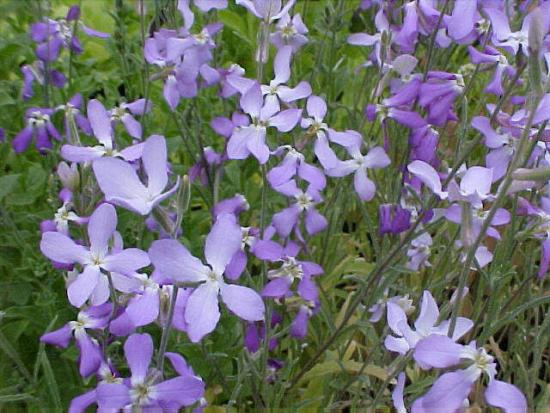
Periodically it is worth removing weeds and loosening the soil. But this must be done with caution, as the stems of the plant can easily be damaged. If you follow these simple rules care, matthiola bicornuum will develop and bloom well. When choosing a planting site, it is necessary to take into account that the soil has not been previously fertilized with humus.
Diseases and pests
If the soil is too waterlogged, the rhizome may begin to rot, causing the plant to wither and die.If any lesions are noticed on the foliage, it should be removed immediately so that the infection does not spread to healthy leaves. When growing matthiola bicornuum, you may encounter fungal diseases, from which many cruciferous plants suffer.
If this happens, it is worth removing the diseased specimens and burning them. The soil, in turn, must be treated with special means. If the weather is dry, flea beetles may occur. This causes small holes to form on the foliage. In this case, it is necessary to sprinkle the plant with wood ash, which is first ground into dust.
If matthiola has been infected by whiteweed, insecticide treatment is carried out. So, matthiola bicorne is a beautiful flowering plant that covers the garden with a pleasant aroma in the evening. Caring for the plant is simple, but some rules are worth considering.
Mattiola two-horned on video:

